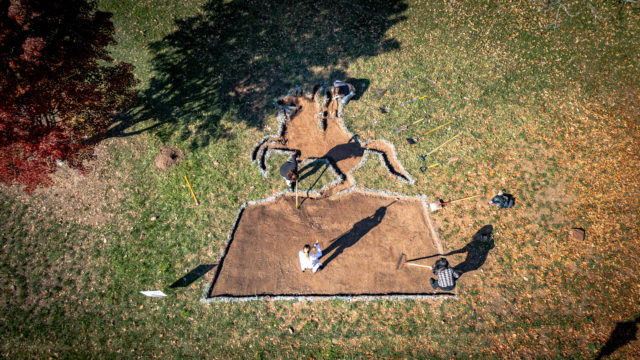Nicholas Galanin (Tlingit and Unangax, b. 1979)
Unshadowed Land
Nicholas Galanin’s exhibition, Dreaming in English, is on view at the Van Every/Smith Galleries through December 9, 2021. Over the past two decades, Galanin has worked across media, materials, and processes, engaging past, present, and future to expose widespread misappropriation and commodification of Indigenous visual culture, the impact of colonialism, intentionally obscured collective memory, and barriers to the acquisition of knowledge. His practice, encompassing sculpture, installation, photography, video, performance, printmaking and textile-based works, unites traditional and contemporary processes and materials to reclaim narrative and creative agency, and contribute to the continuum of Tlingit art within an ever-evolving contemporary Indigenous practice. His exhibition at the Van Every/Smith Galleries includes an installation of the same title that speaks directly to the forced removal and relocation of Indigenous children from the reservation into residential “schools.” These so-called “schools” were not focused on education but rather on assimilation; the intent was to eradicate both culture and spirit.
In conjunction with his exhibition, we have invited Galanin to create a short-term, ephemeral, outdoor project. Unshadowed Land builds on his recent installation for the Sydney Biennale, Shadow on the Land (2020). In November 2021 members of the community worked together to create a site of exposed soil in the shape of the shadow of the monument to Andrew Jackson currently standing at Lafayette Square in Washington, D.C. The silhouette, sited next to the Belk Visual Art Center, will remain fallow for several months until late April when members of the Davidson community will work together, along with citizens of the Catawba Indian Nation and their Food Sovereignty Working Group, to plant Catawba corn into the silhouette. This restoration has symbolic meaning. Prior to the eighteenth century, villages surrounded by fields of this variety of corn lined the banks of the Catawba River like beads on a string. Many of those sites are submerged under Lake Norman today and inaccessible. The location of Galanin’s piece also is significant in that it reintroduces a garden to the previous site of Davidson College’s antellebum-era presidential home where enslaved women once gardened and labored in a kitchen to feed the college president’s family and guests of the college.
Why Andrew Jackson? Jackson, more so than any other US leader, is associated with settler colonialism[1] in the Native South. He also has ties to this region. Jackson was born near the border of North and South Carolina in the Waxhaws, which is located between Davidson College and the Catawba reservation. As military commander, he led the assault on the Mvskogee Red Sticks at Tohopeka (Horseshoe Bend) and forced the Treaty of Fort Jackson on Native combatants and allies alike in 1814; this treaty ended Native military resistance to US expansion in the South and opened 23 million acres of the Cotton Belt to plantation agriculture and chattel slavery. As President, Jackson oversaw the passage of the Indian Removal Act in 1830, which resulted in the forcible removal of over 60,000 Indigenous people from an additional 25 million acres of land between 1830-1860 and thousands of Indigenous deaths. Both of his accomplishments were wildly popular with Southern voters and facilitated settler occupation and the enslavement it depended on. Jackson also was the first Presbyterian to serve as President of the US at a time when the church was heavily invested in child separation as a form of racial uplift for Indigenous people, and wrestling with whether to accept enslavement or condemn it as a moral evil. Of course, Jackson also was a planter and slave owner. The shadow of Jackson and his decisions as a general, President, and enslaver stretch over the last 200 years onto the land today, impacting the ability of Indigenous and Black communities to access land and water, to feed themselves sustainably, and for Native people surviving in the South, to be visible to their non-Indian neighbors. Comparable to the recognizable silhouette of Captain James Cook that Galanin carved into the land in Sydney, he proposes to embed the familiar image of Jackson on his war horse into this land once inhabited by Native people and worked by the enslaved.
Why a collaboration with the Catawba Indian Nation? Davidson College exists on the Catawba’s ancestral land. The Catawba ceded this territory to the Carolinas in a series of treaties during the 1760s following a deadly smallpox epidemic that decimated their population. This occurred during the same time period as intense military conflict in which settlers from the Carolinas destroyed Cherokee villages in what is now upstate South Carolina. Witnessing the scorched earth assault on the still powerful tribe to their west, the weakened Catawba negotiated with settlers to maintain control of 144,000 acres along the SC/NC border – a small fraction of their traditional homelands.
Catawbas negotiated for a reservation near what is today the city of Rock Hill, South Carolina. As the architects of what became removal policy began to challenge tribal land rights within the boundaries of existing states like South Carolina, the Catawba became an early target. Anticipating the federal cases that would clarify issues of tribal sovereignty and federal jurisdiction over Indian affairs, settlers in York County used the South Carolina state courts to deprive Catawbas of their land. Research is ongoing, but preliminary findings suggest that some of these settler families were planters affiliated with the Bethel Presbytery, one of the three founding presbyteries of Davidson College. In 1840, the Catawbas signed the Treaty of Nations Ford with the state of South Carolina. In violation of federal Nonintercourse Acts requiring Congressional oversight of Indian land cessions, South Carolina purchased the remaining 144,000 acres of Catawba land, and Catawbas agreed to voluntarily leave the state. Most Catawbas stayed, however, and like approximately two dozen other small Native communities across the Carolinas who were not removed, they were dispossessed, impoverished, and “hid in plain sight” on the land that had once been theirs. Represented by the Native American Rights Fund, the Catawba initiated a land claim suit in 1980 that was resolved with a $50 million settlement in 1993.
This existence of tribes without the boundaries of existing states was a matter of great concern not just to Native people but to non-Native people as well. Reflecting high-profile national debates over Indian removal and the leadership of the Presbyterian church in mission education and conversion efforts since the Washington administration, nineteenth-century Davidson students in both the Philanthropic and Eumenean Societies engaged in civil discourse around the government’s responsibility for and treatment of Indigenous people. Phi and Eu debates include “Was the government justifiable in sending the Indians west of the Mississippi?” (Eu, 1/10/1840); “Has the course of policy pursued by the U. States government towards the Indians been consistent with justice, and the principles of honor and sincerity assumed by the American people?” (Phi, 5/15/1840); and “Have the Aborigines of America been treated with justice?” (Phi, 10/30/1840). In fact, no topic appears with greater regularity in the early years of the societies than Indian affairs. Not even slavery.
Why corn? Corn was the staple food of Indigenous people east of the Mississippi River, and along with beans and squash, these “three sisters” provided the majority of calories consumed by Native people and profoundly shaped Southern cuisine for settlers and the enslaved. Beyond physical sustenance, corn provided medicine, and its growing season structured the gendered division of labor and spiritual practice. Like most Native people in this region, the Catawba grew multiple varieties of corn, which they ate fresh, processed and preserved, traded, and redistributed as part of their diplomatic protocol.
Catawba corn was chosen for this project after a conversation between Galanin and Catawba scholars DeLesslin “Roo” George-Warren and Dr. Brooke Bauer because of its medicinal significance, historic status as a staple crop, and current efforts for its reintroduction. Over time, Native people throughout the South stopped planting their unique, regional varieties and adopted the dominant, sweeter versions preferred by settlers. Catawbas were no different. Thought this corn was grown by the Catawba between 1970s -1990s, sometime shortly after all off the seeds were lost.
The Catawba only began growing this colorful variety of corn again in 2019, after Dr. David Shields (University of South Carolina) helped locate the seeds which were then provided by Dr. Jim Holland and Matthew Smith at North Carolina State University State Extension Office.
In Fall 2022, we will harvest the corn and rematriate it back to the Catawba Indian Nation, helping build up their seed collection. By gifting corn back to the Catawba, we seek to acknowledge their ancestral ownership of this land, our commitment to tend to it, and our hope to create a reciprocal relationship moving forward. We see this planting, harvesting, and gifting as a potential process through which the college can produce a formal land acknowledgement – a pressing demand of students, faculty, alumni, and staff.
Unshadowed Land thus is an antithesis to monuments celebrating genocide and enslavement. Instead, it invokes the intersection between these expressions of white supremacy but culminates in gestures of acknowledgement, healing, and reconciliation. This work is an un-shadowing of land, a bringing to light the injustices of the settler history of the Carolinas, and a move toward cultivation and celebration of Indigenous connection to the land and a continuum of ancestral knowledge. It is an outgrowth of past, current, and ongoing antiracist work to consider the college’s history and establish reciprocal, respectful relationships with Native people in our region, especially the Catawba, moving forward.
Several events will take place throughout the year. Join us!
Fall 2021:
- Listen to a conversation between Nicholas Galanin, DeLesslin “Roo” George-Warren, Dr. Rose Stremlau, and Lia Newman to learn more about his exhibition at the Van Every/Smith Galleries, Dreaming in English, as well as Unshadowed Land.
- Join us on November 16, 11am, as folks from the Catawba Cultural Center smudge the earth with cedar and drum before we begin cutting the silhouette into the land.
- Stay tuned for a time lapse video and photos of the creation of the silhouette.
Spring 2022:
February 10th, 2022:
The next phase of Nicholas Galanin’s Unshadowed Land sculpture involves amending the soil as we begin to prepare to plant Catawba corn this Spring. Join “Roo” George-Warren of the Catawba Cultural Center, Jamie Moore, Davidson College’s Director of Grounds Maintenance at Davidson College, and Halle Murphy, Davidson College’s Farm Manager, to learn more about soil amendments beginning at 3 p.m. Meet on the lawn of the Belk Visual Art Center. At 4:15 p.m., Yancey Fouché, Davidson College’s Director of Sustainability, and Claire Begalla ’24, resident of the Sustainability Cooperative and gallery intern, will lead a home composting workshop.
- Check our event page for upcoming talks and event including the planting of the corn in late April 2022. For more information, contact linewman@davidson.edu.
Summer 2022:
- We hope to get our first harvest of Catawba corn!
Fall 2022:
- Check our event page for upcoming talks and events including a harvest festival in partnership with the Catawba Indian Nation. Date TBD. We will return to them some corn on ear for their seed reclamation project and collaborate with Vail Commons to use the rest in traditional Southeastern Indian dishes using corn.
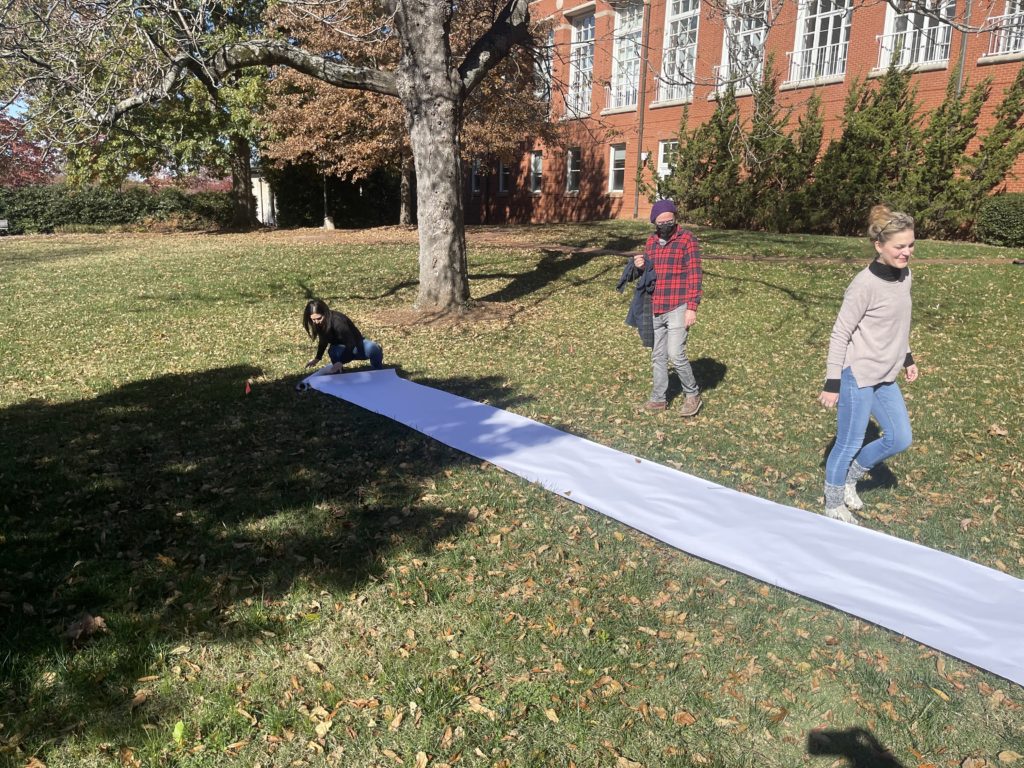
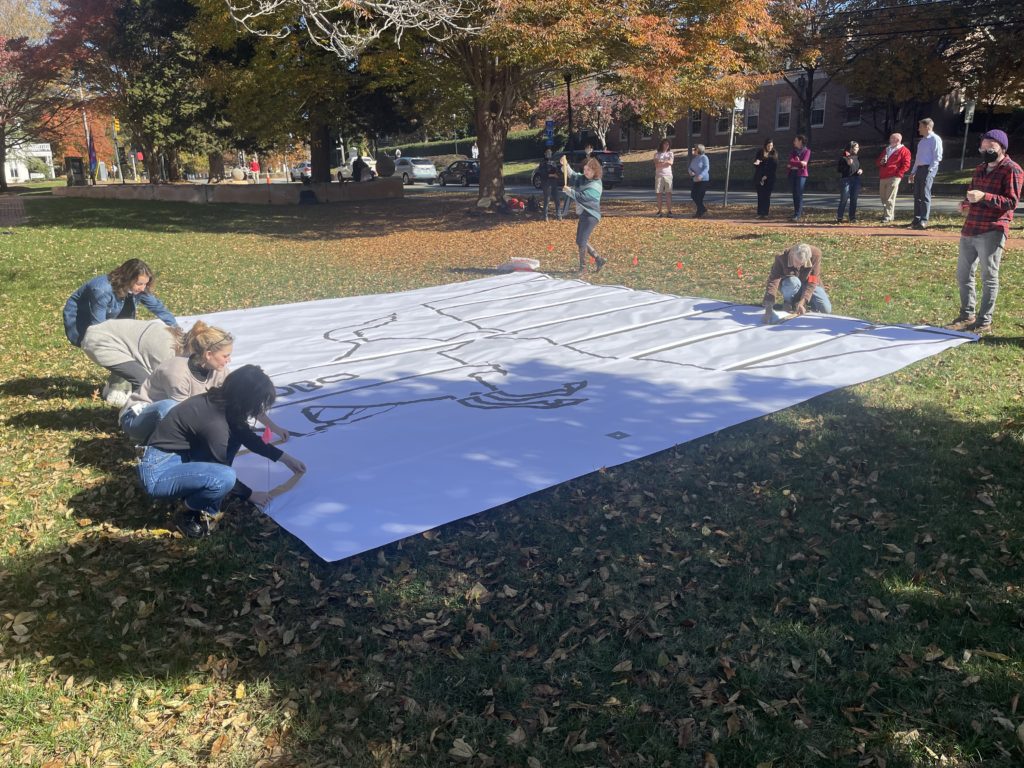
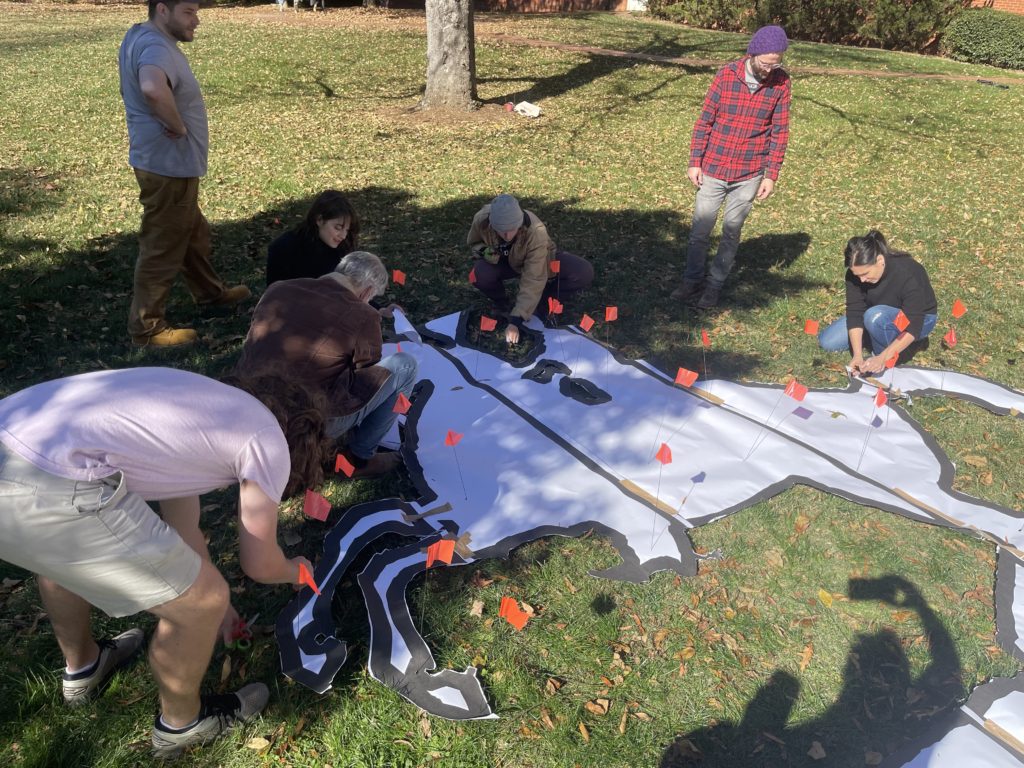
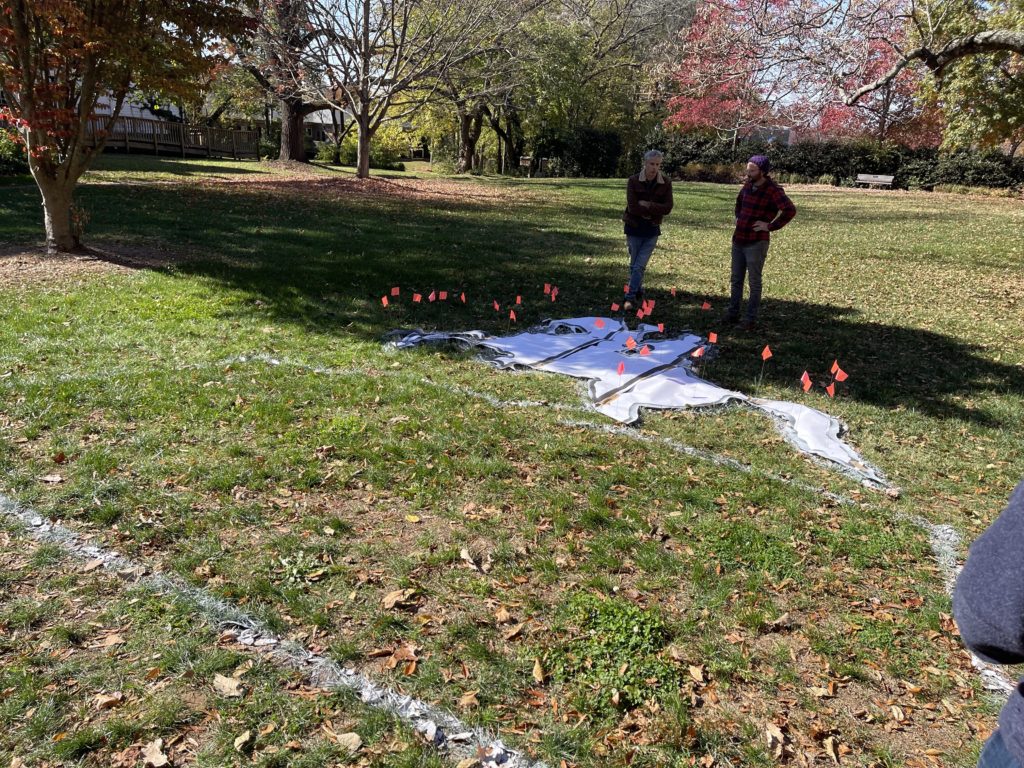
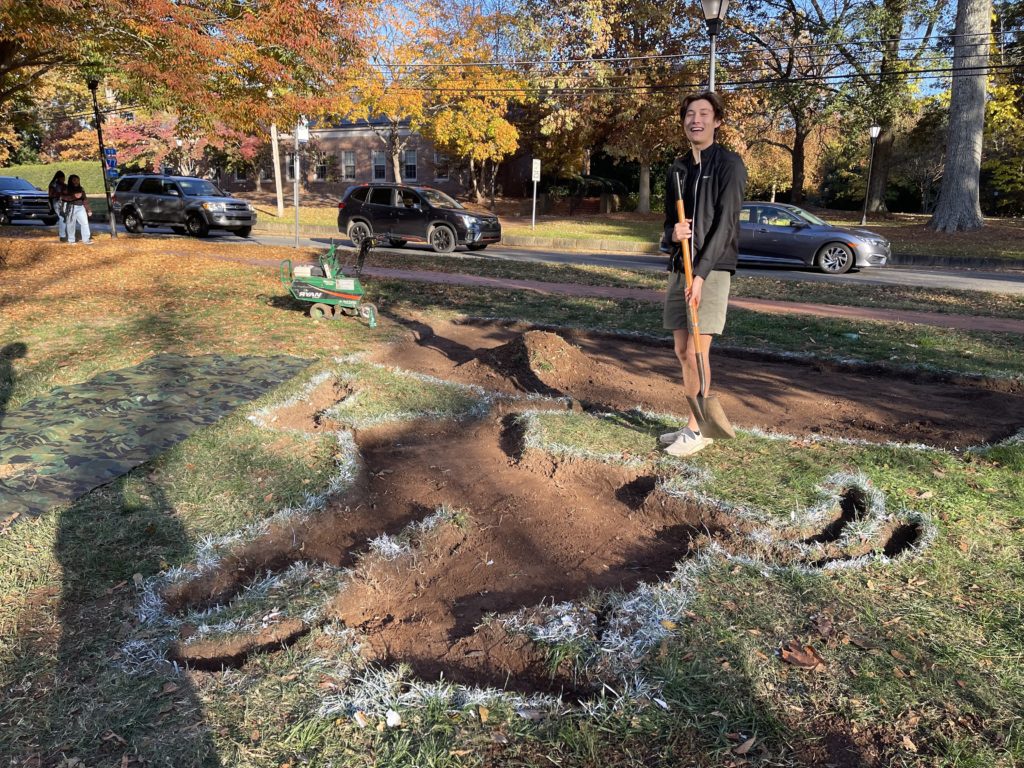
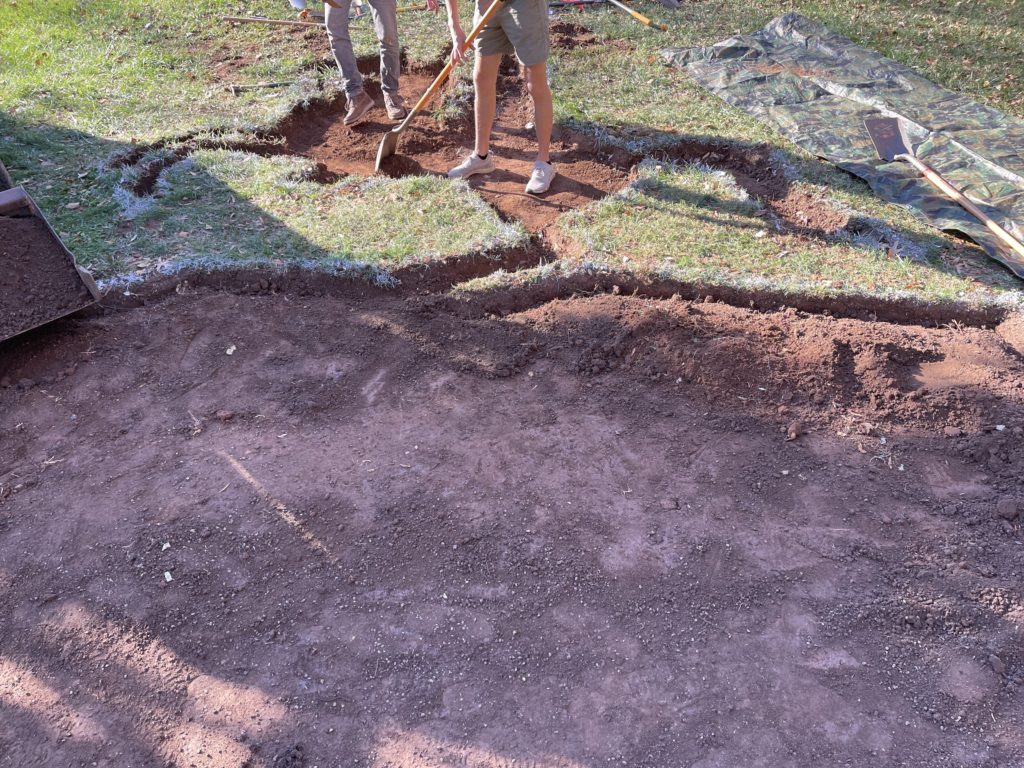
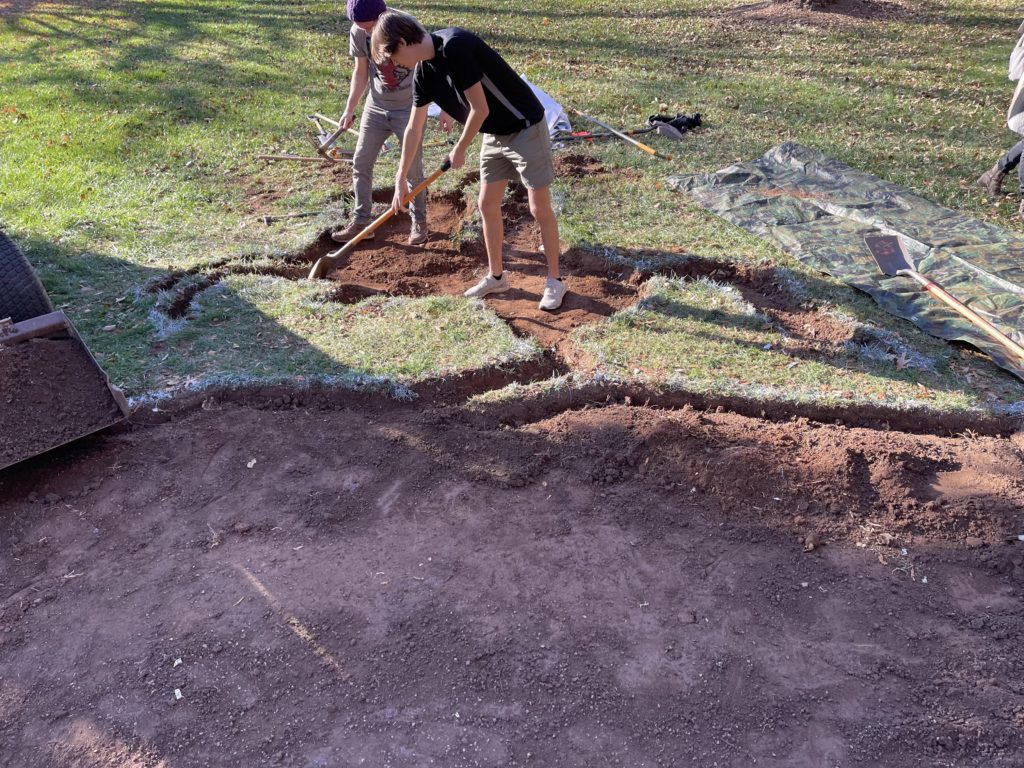
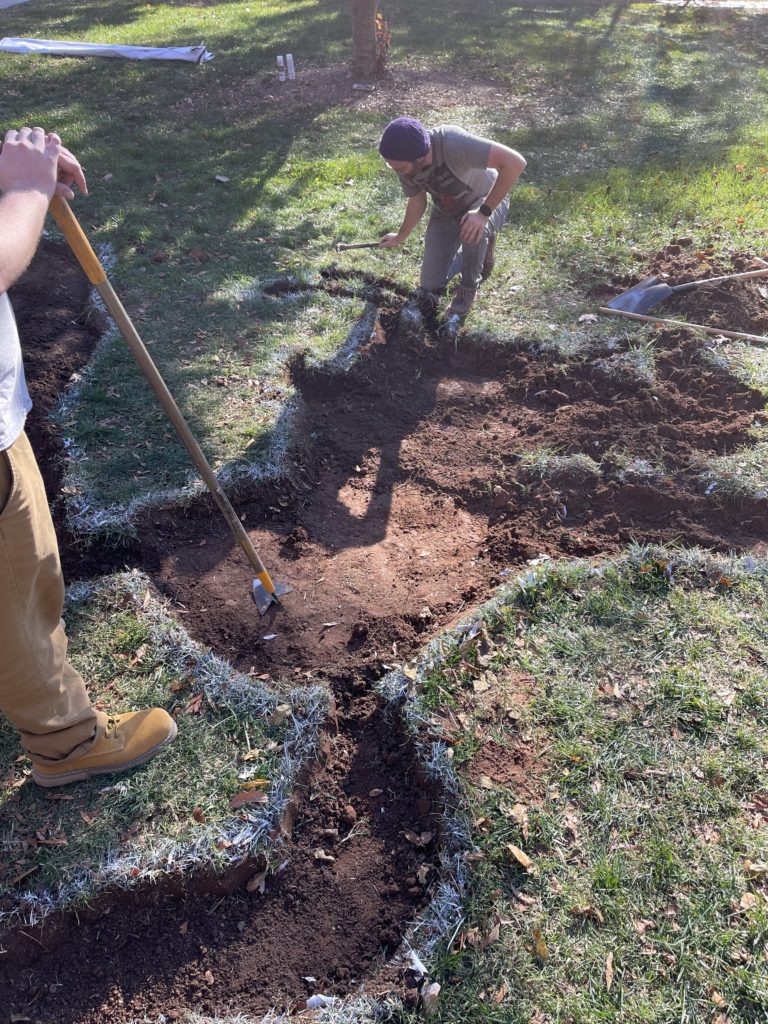
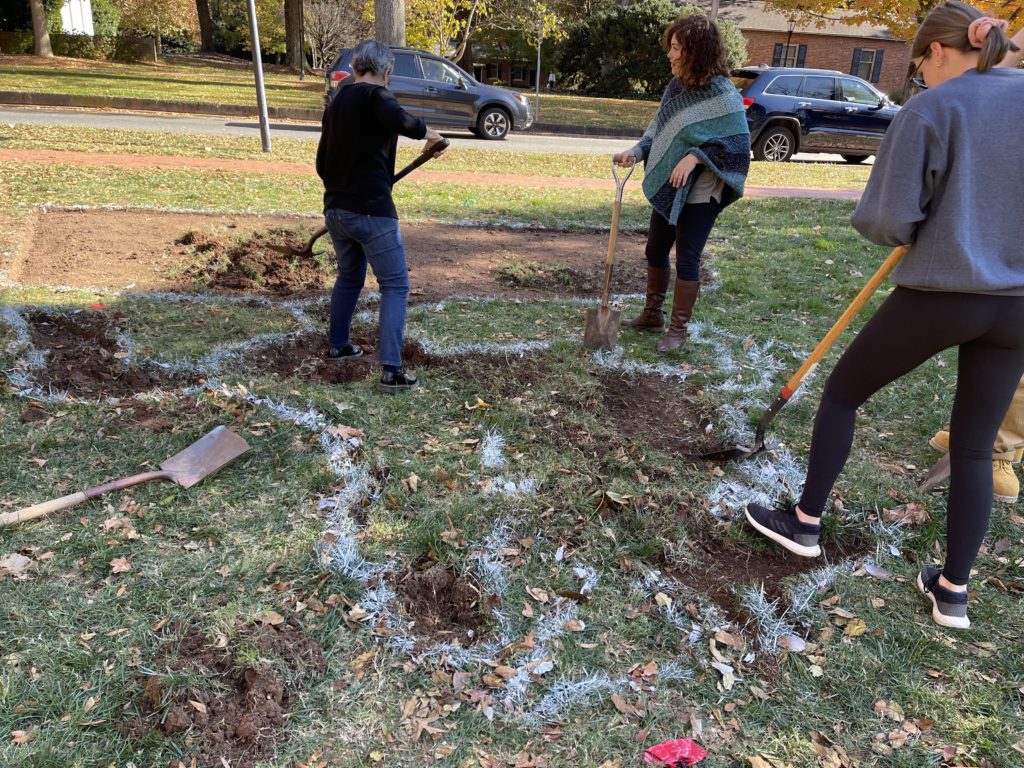
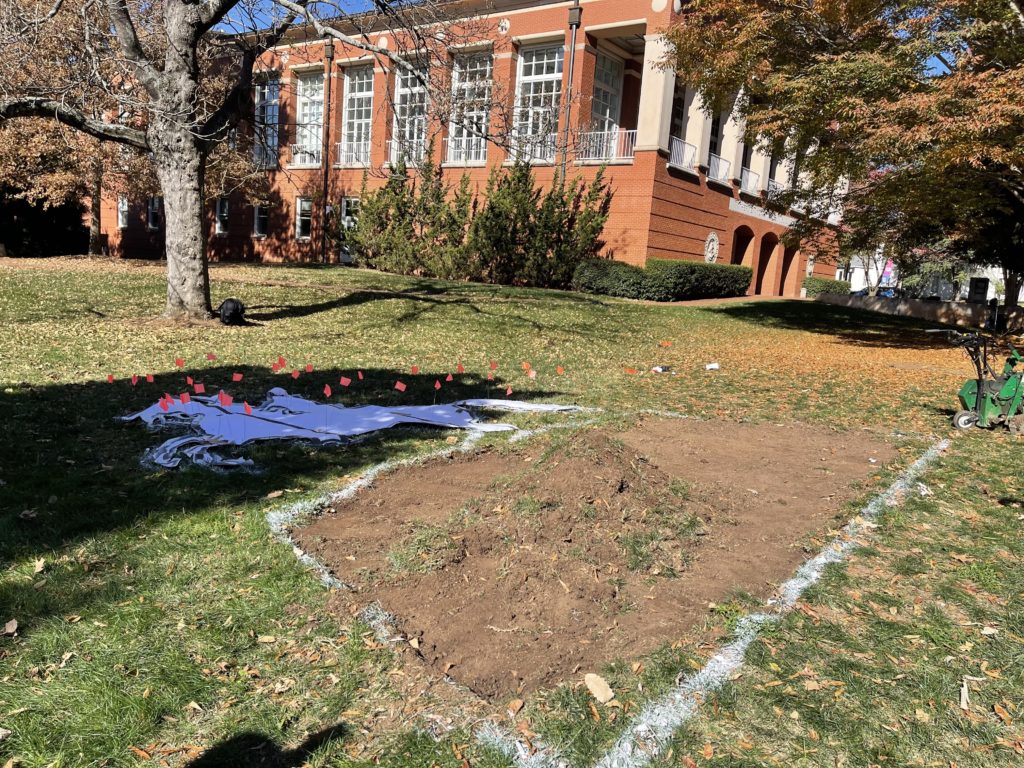
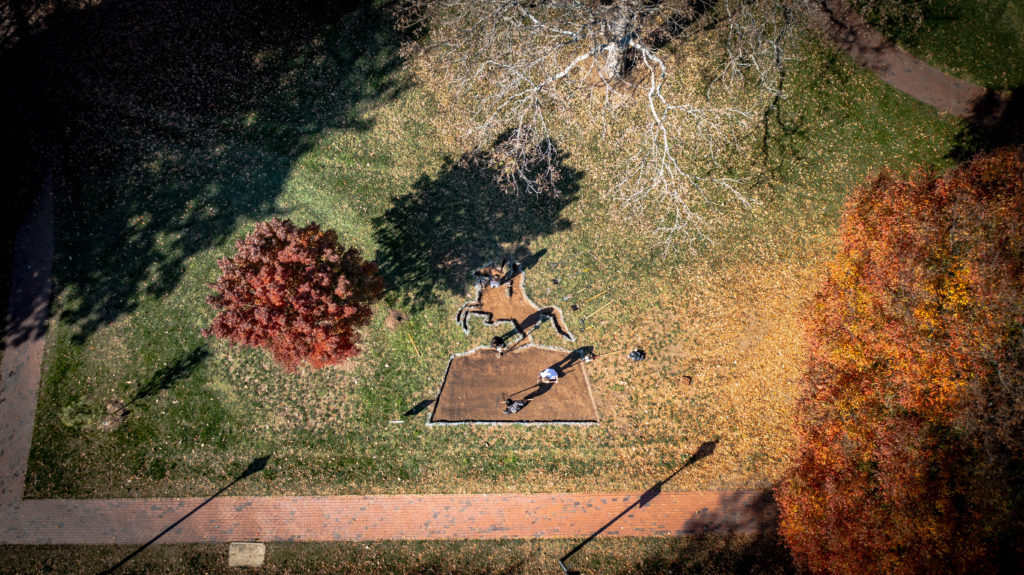
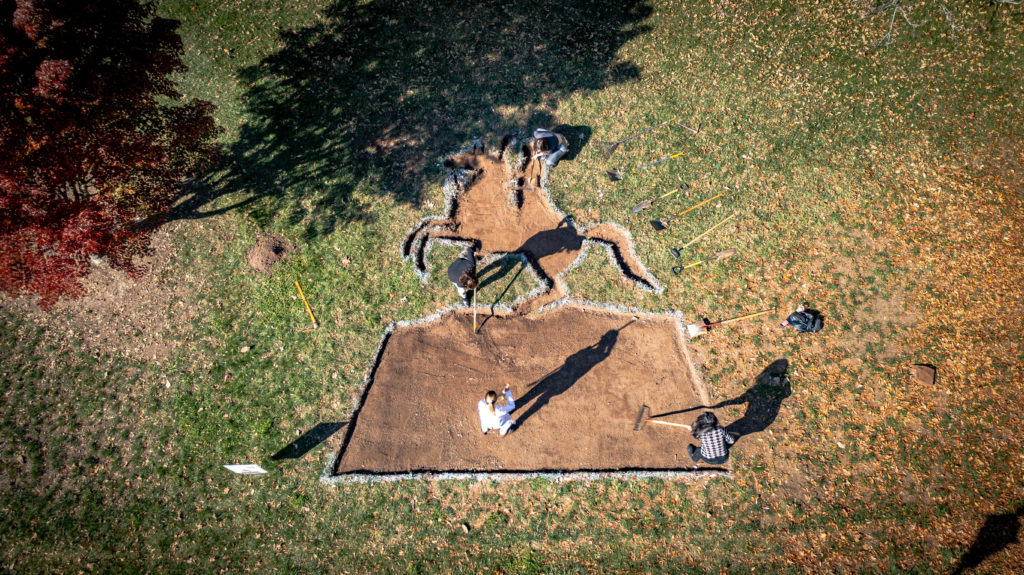
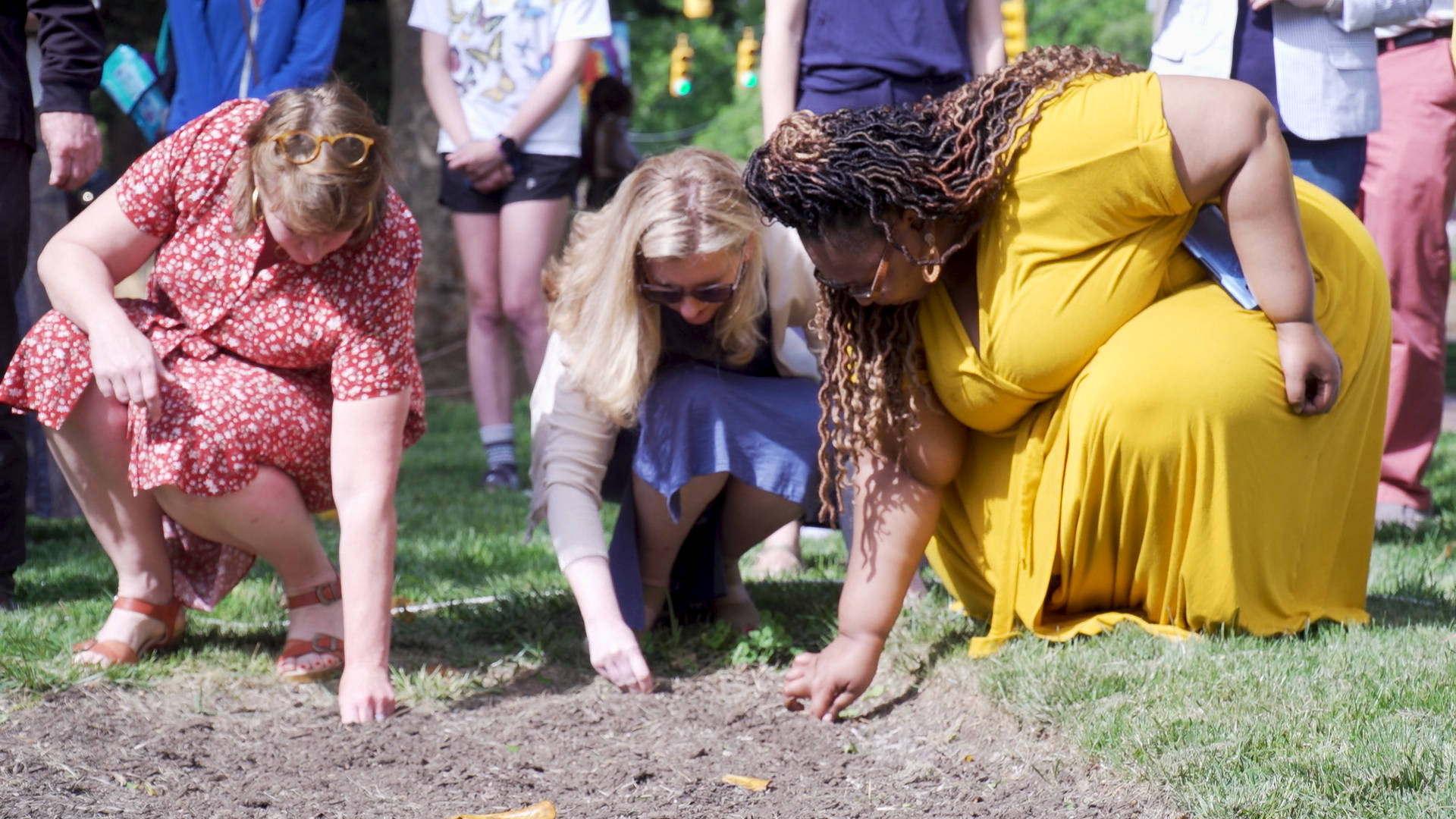
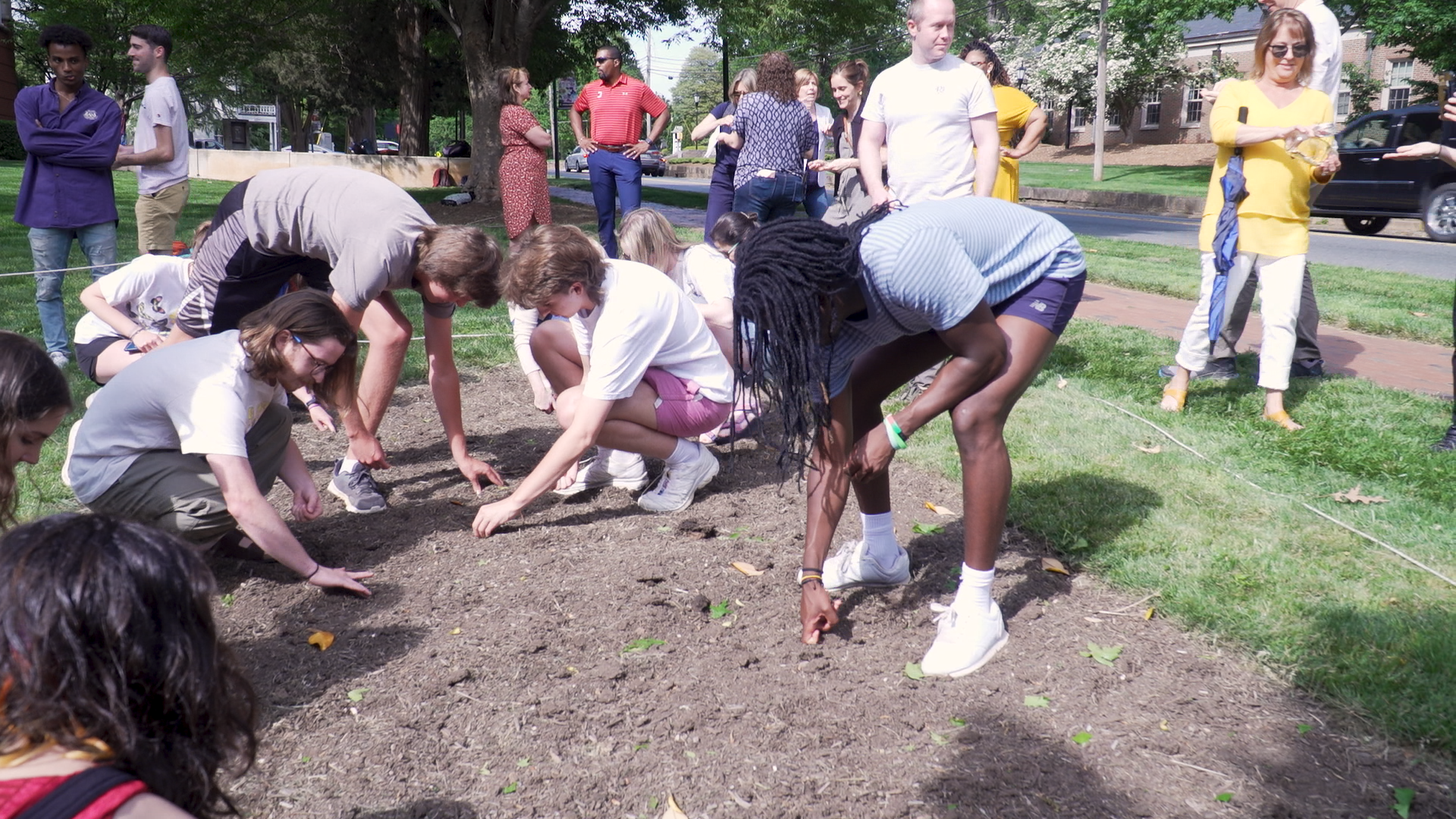
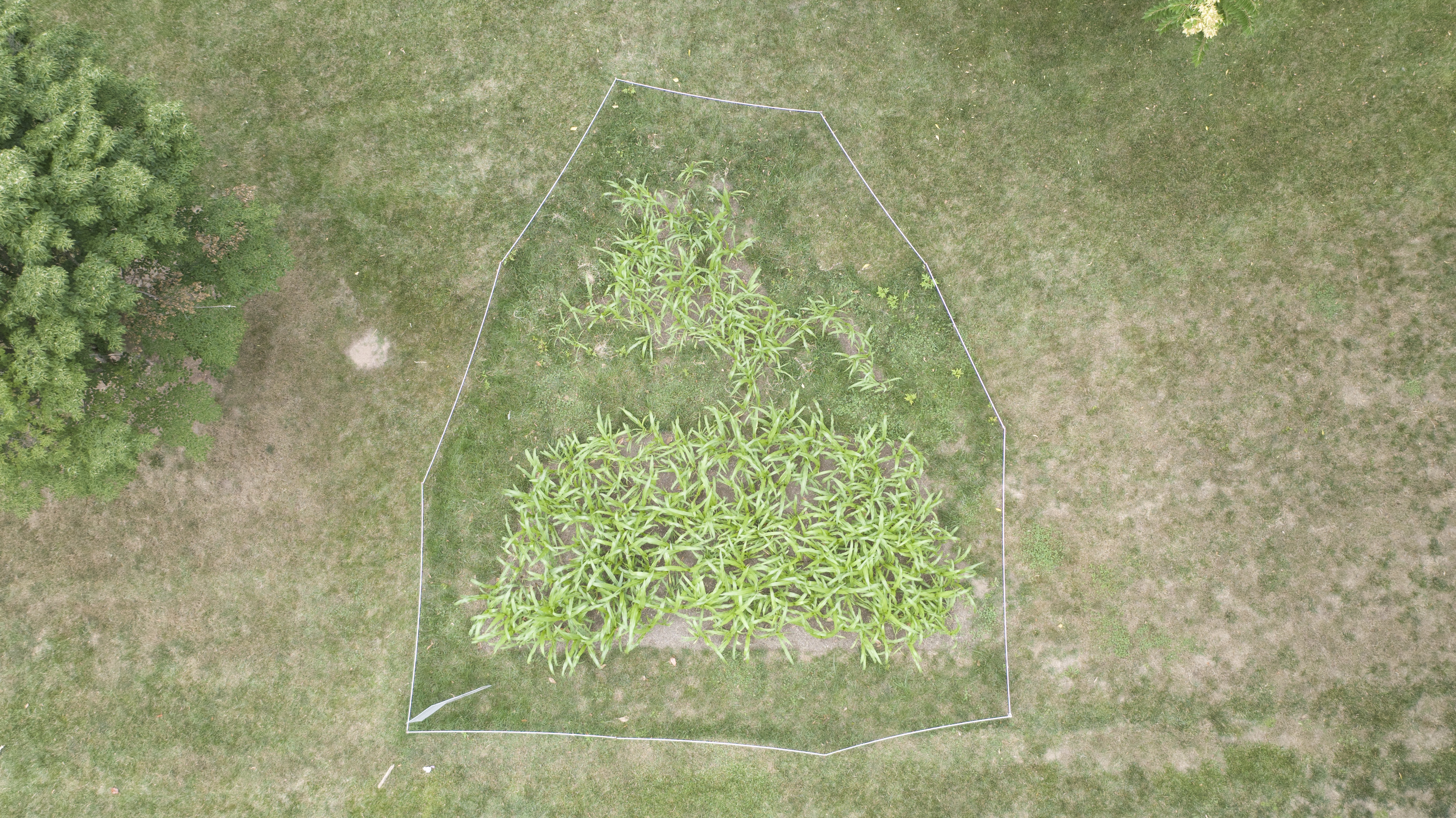
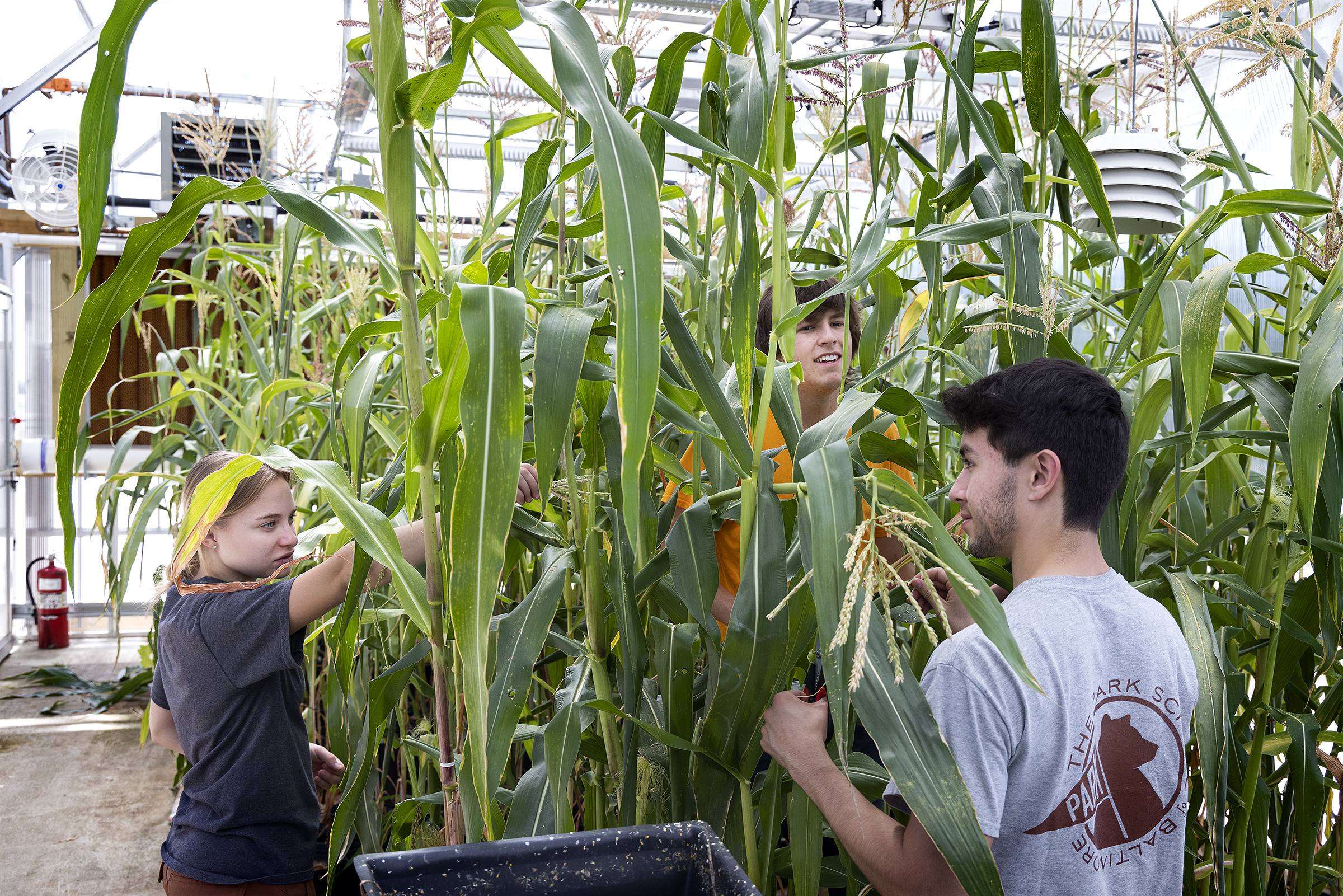
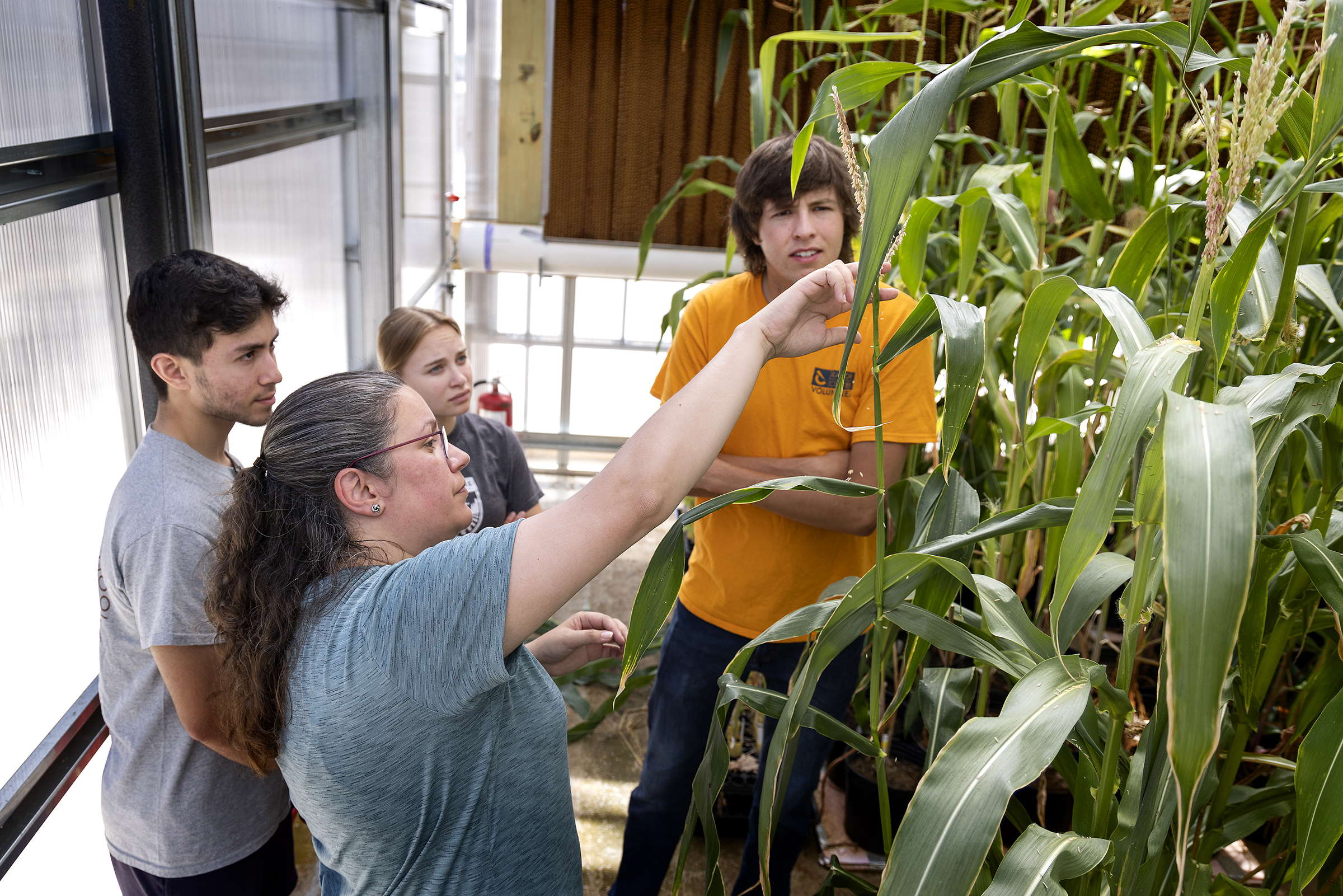
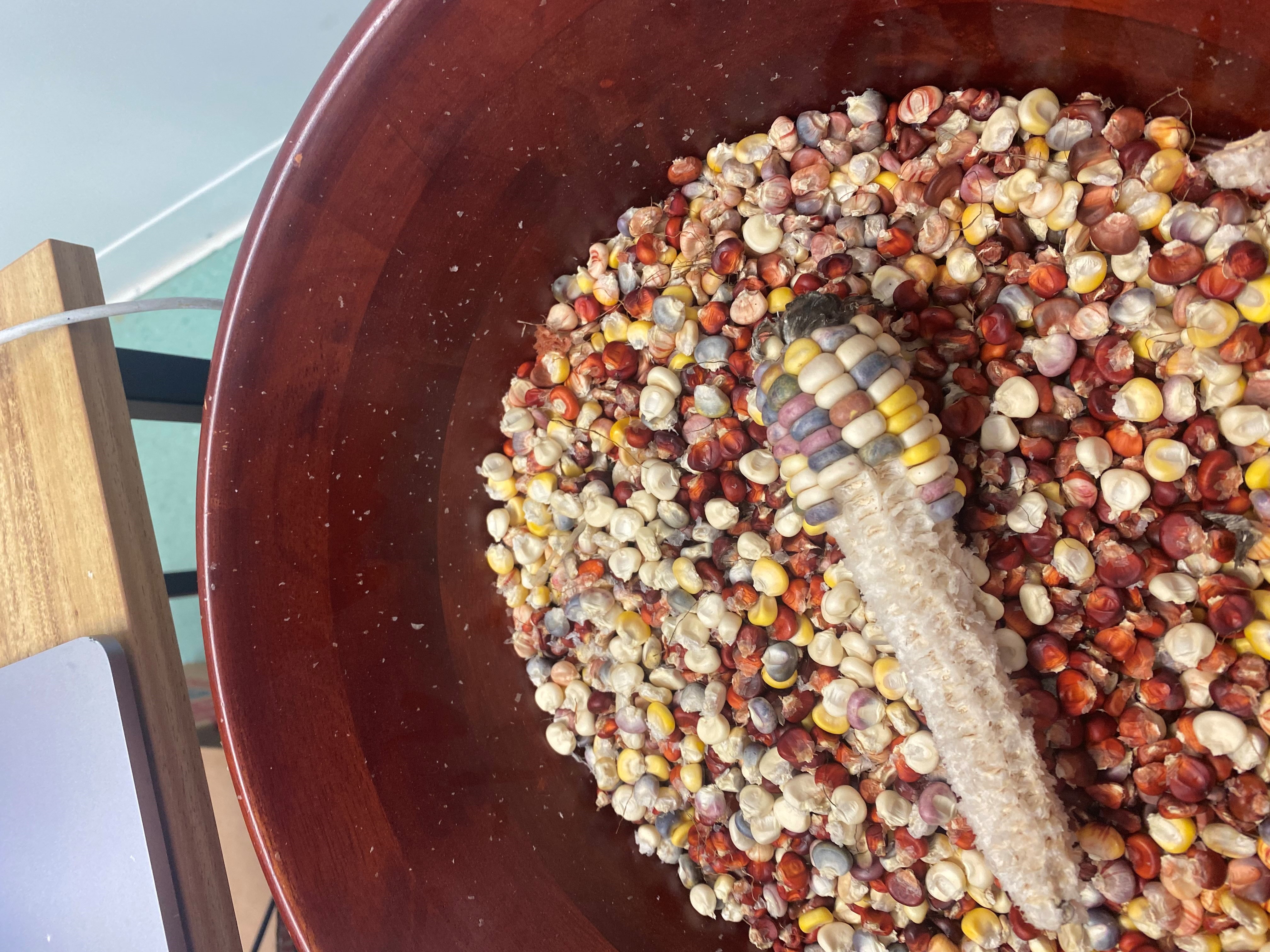
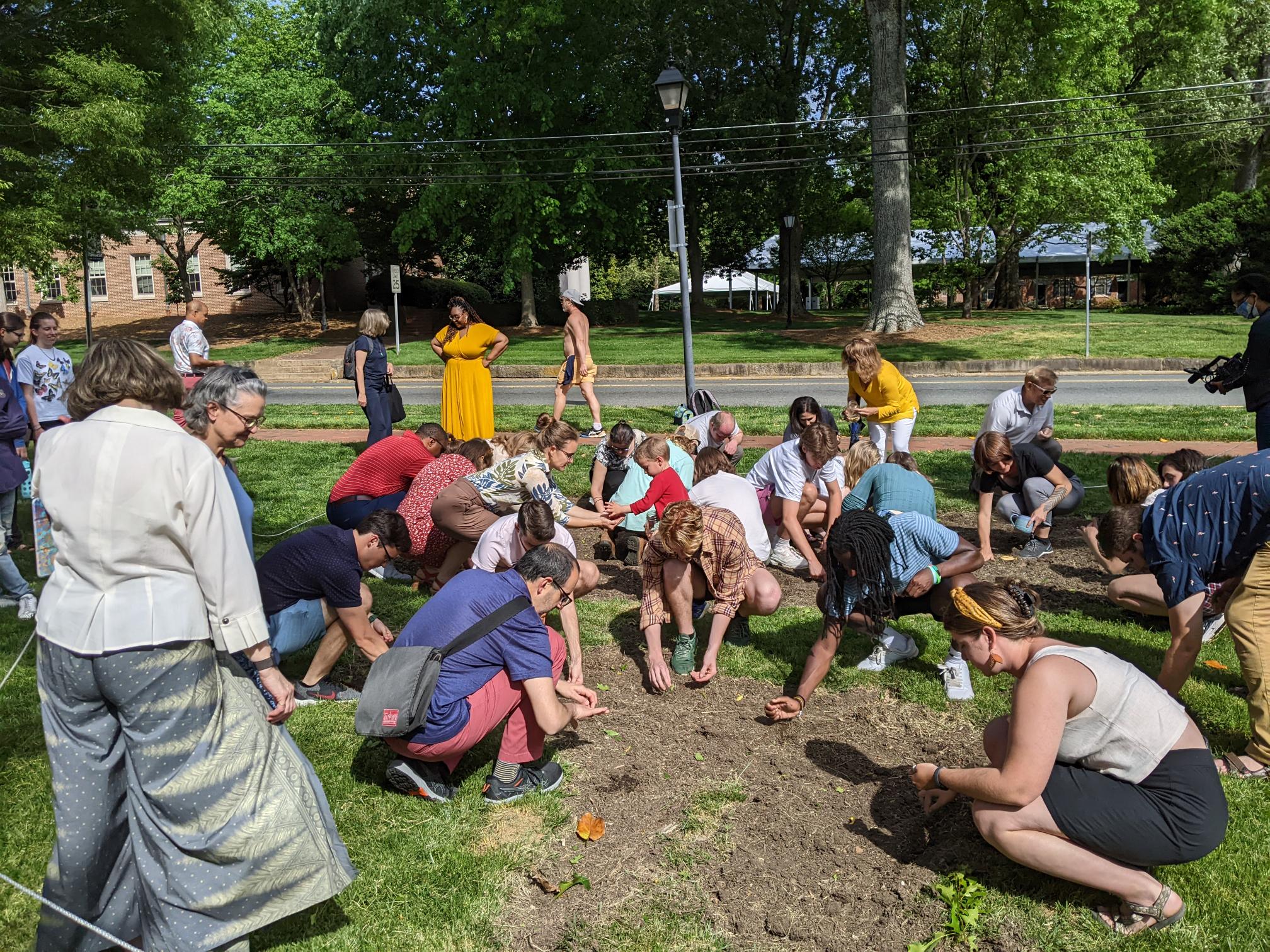
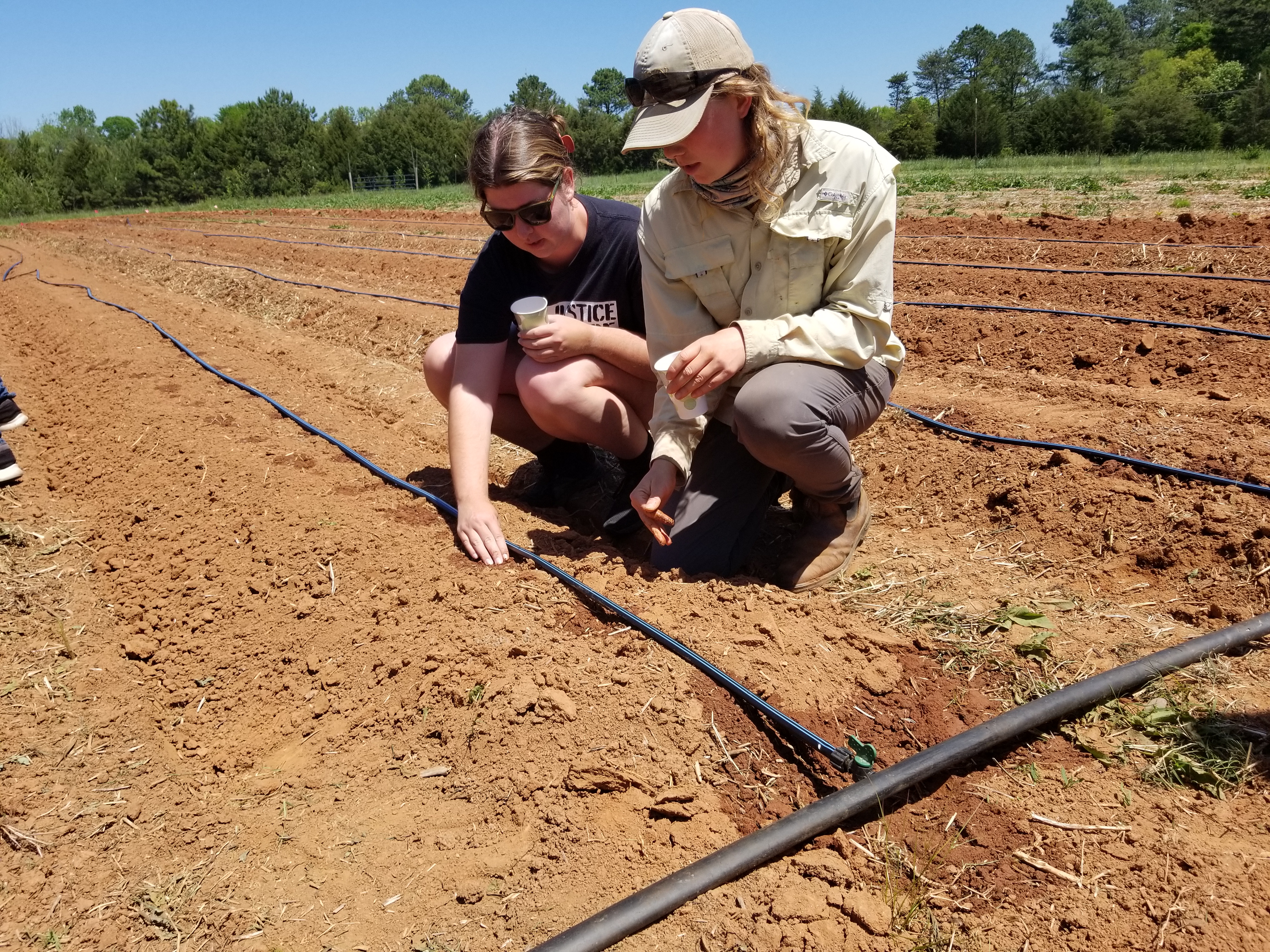
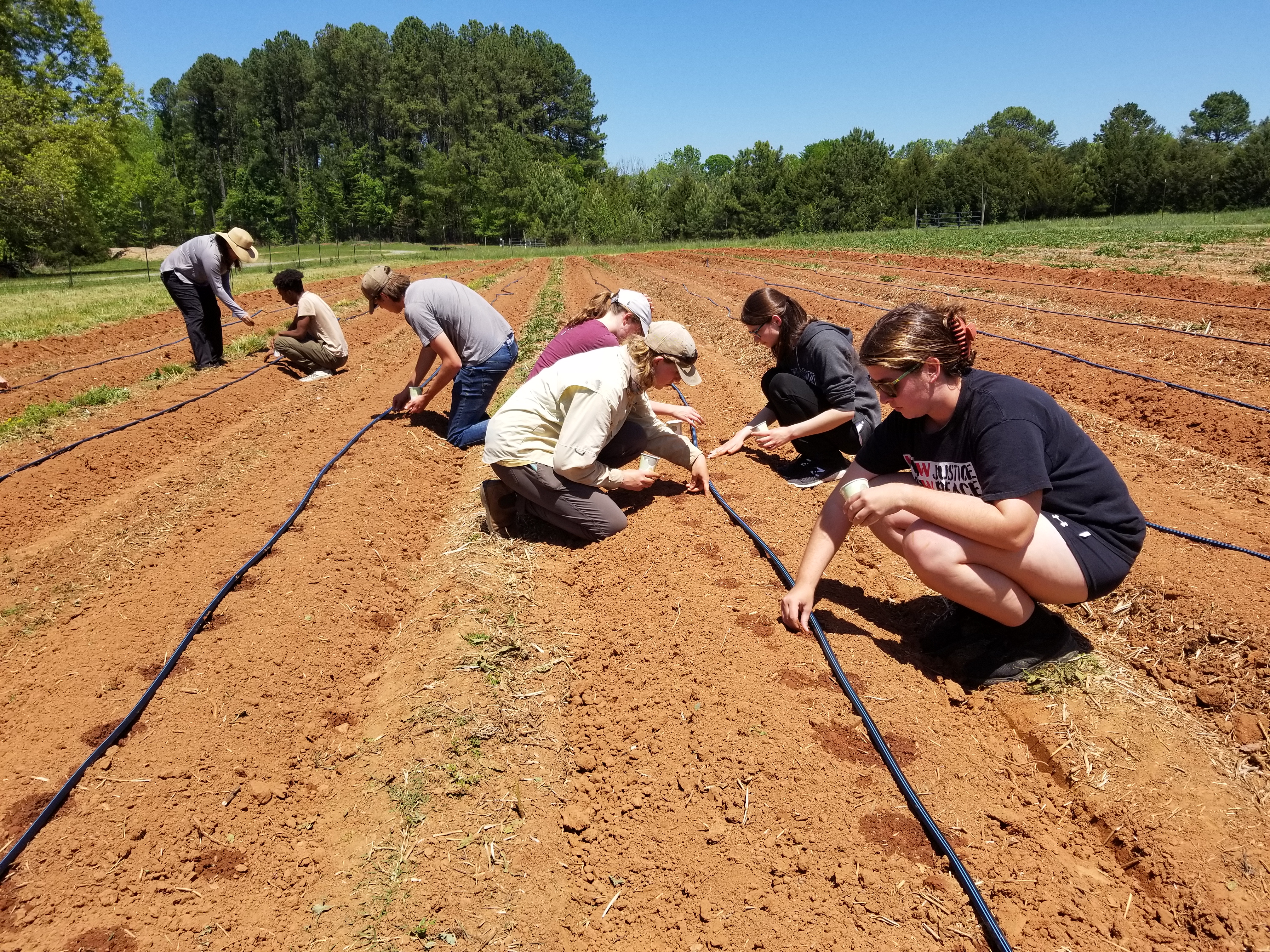
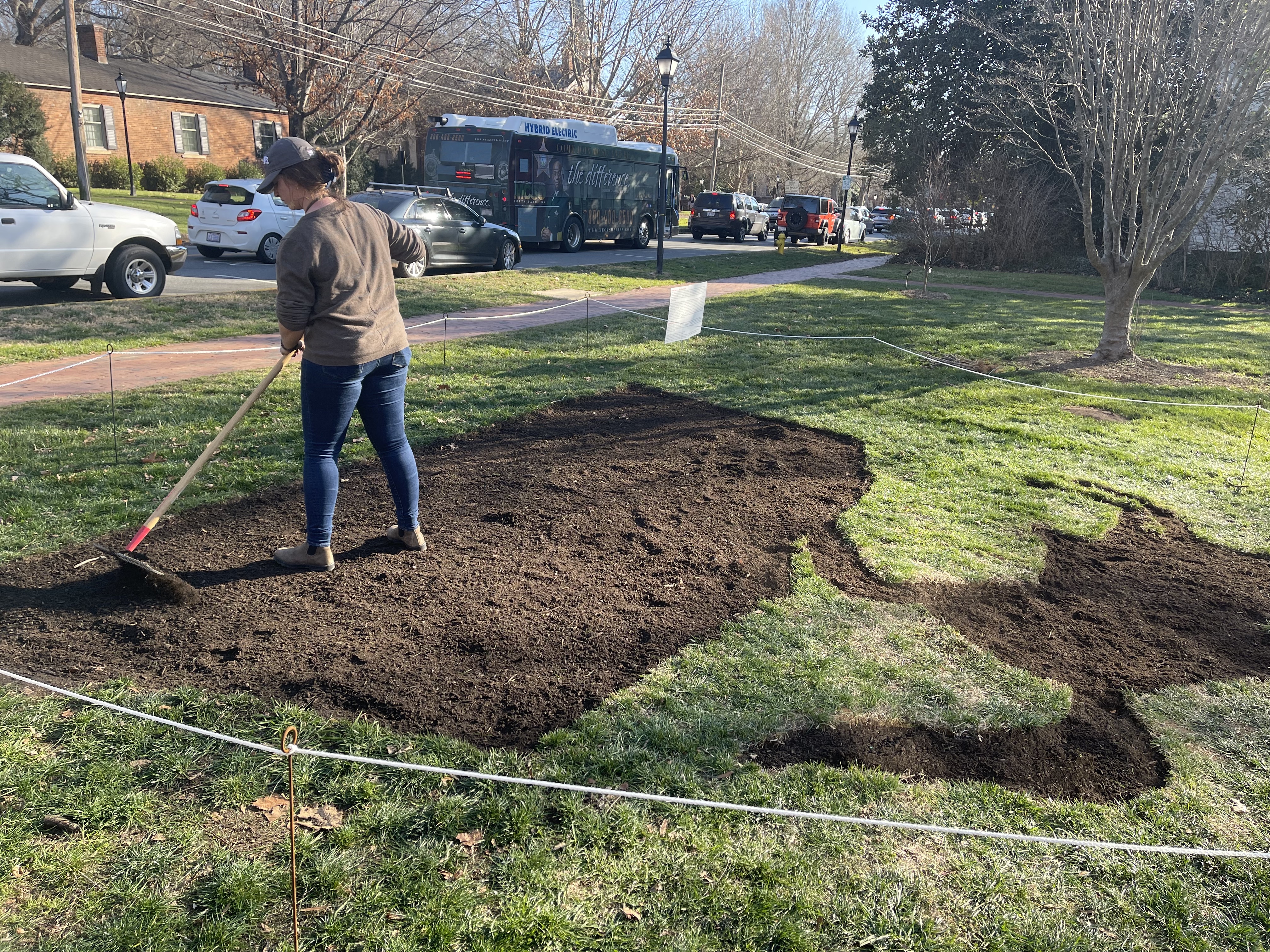
[1] Settler colonialism is a distinct type of colonialism in which settlers come to stay permanently to occupy and assert sovereignty over indigenous lands and to replace indigenous populations with an invasive settler society that, over time, develops a distinctive identity and sovereignty.

